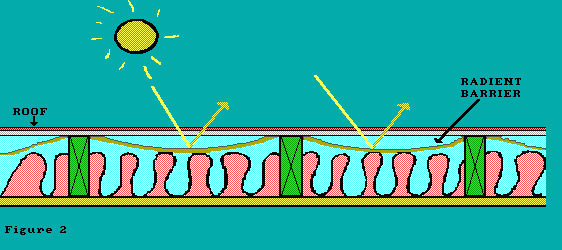Radiantguard radiant barrier foil insulation installed in an attics can reduce attic temperatures by up to 30 degrees when stapled with a staple gun to the underside of roof rafters by reflecting up to 97 of the radiant heat that strikes its surface thereby reducing heat transfer from the attic to living spaces resulting in lower utility bills.
Roof baffle radiant heat.
Radiant barriers are utilized to reduce summer heat gain in attics.
The temperature of the attic space increases and that heat is transferred to the building below.
Little of that heat then radiates to the attic.
The radiant barrier gets hot.
Ventsure 4 foot strip heat moisture ridge vents work with ventsure inflow intake vents and or undereave soffit vents to help improve air flow through the attic.
When the underside of the roof deck has a radiant barrier installed the heat still travels through the materials but once it hits the radiant barrier it s come to a dead end.
As an added plus weyerhaeuser rbs can even help keep non air conditioned uninsulated rooms like garages.
Roofs with radiant barrier have the potential to lower the temp at night because the radiant barrier prevented the heat loss that would typically occur from the traditional mass insulation on the attic floor rising to heat the roof.
Increasing summer energy consumption and cooling costs.
This method also reduces the heat subject to attic mounted ac duct work thereby allowing them to work more efficiently.
This means radiant barrier can increase the life of the roof shingles.
If you go up into the attic and touch it you ll see that the heat s still getting there.
Attics heat up when the sun s radiant energy heats the shingles and the heat is transferred to the interior attic space through the roofing materials via conduction.










